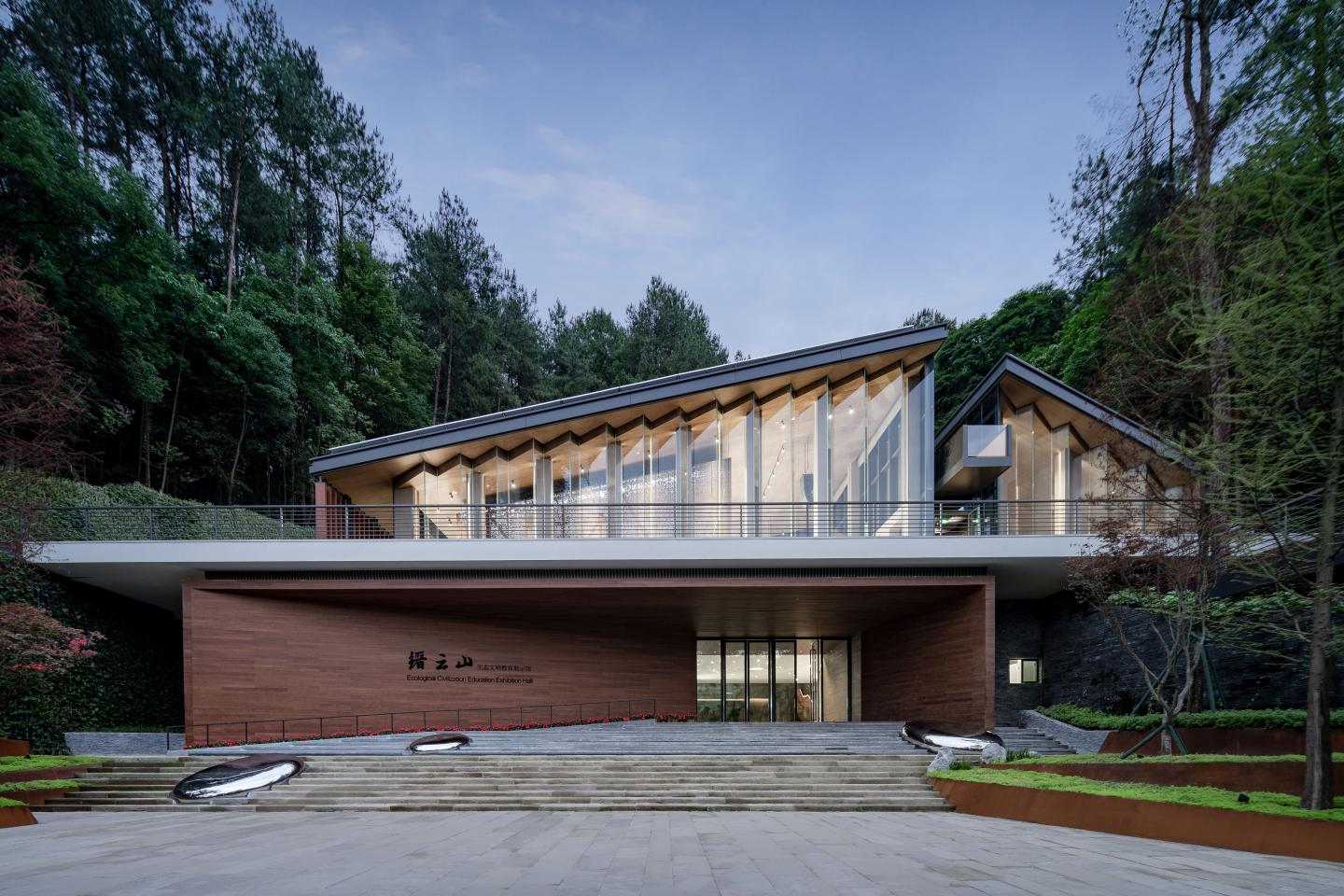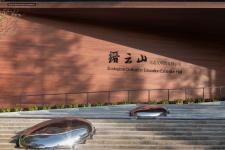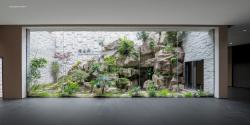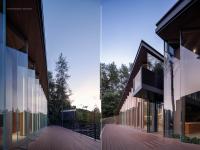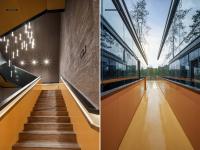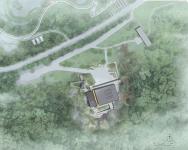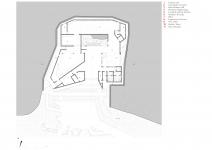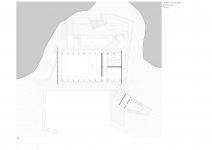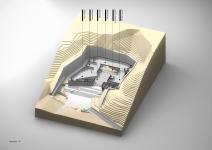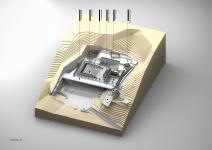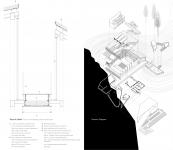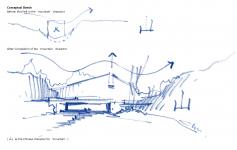The Cause: A scar in the green
The culture of Chinese landscape, also known as ‘Shanshui’ plays an important role in traditional Chinese culture. The spirit of Chinese ‘Shanshui’ means more than just the natural scenery. It is also an advocated lifestyle of Chinese people: respecting nature, shaping one’s personality in nature, and pursuing the unity of nature and humanity.
Jinyun Mountain National Nature Reserve is the closest national scenic spot and nature reserve to the central city of Chongqing. It has bred continuous mountains, lush forests, and a beautiful lake named Daihu that have attracted countless literati and artists throughout history. For a long time, people had been taking great care of this natural treasure. However, recent years of tourism resource development have seen some disordered and negligent management leads to illegal construction and pollution which have severely damaged the ecological environment of Jinyun Mountain and Dai Lake. In June 2018, under the leadership of the local government, the Jinyun Mountain National Nature Reserve launched a comprehensive improvement operation of its ecological environment, which gradually restored the natural beauty of the Jinyun Mountain Reserve. To publicize ecological-friendly ideologies and promote environmental protection within Jinyun’s cultural context, the government decided to commission a new ‘Jinyun Mountain Ecological Civilization Education Exhibition Hall’ on the site of a hotel built in violation of environmental regulations after its demolition.
The site is surrounded by mountains on three sides, facing Daihu Lake to its north. After the demolition of the hotel, a flat site of about 1,400 square meters was left, surrounded by vast green woodlands. Many steep cuts have been formed on the edges, dividing the green and the construction ruins abruptly like a dazzling scar in the green.
As the only new-built public building in the Nature Reserve, the Exhibition Hall itself should serve as an ‘exhibit’ of realizing the idea of ecological civilization. Confronting the man-made scars of the past, the design proposal needs to repair and regenerate the site under rational ecological logic and strict regulations. The first established design purpose is that the architecture should explore the basic principle of coexisting with the main body – the mountain, based on the humble and intimate concept of a Chinese ‘dwelling’, rather than a solemn and condescending ‘palace’.
In the design process, we intentionally strengthened textual thinking as the clue of space generation and the methodology of the entire process. The proposal associates space and forms with text and symbol as the façade adopts the writing form of the Chinese Character ‘山’(mountain), filling the triangular void left by the demolished hotel on the horizon. The newly introduced structure, together with the uplifting green land on both sides, forms a mountain-shaped silhouette of ups and downs, humbly restoring the ecological scars, maximum protecting and adapting to the original topography.
In this ‘mountain dwelling’, the space integration combines a simple form with a rich and orderly interior path: The enclosed interior space emphasizes the purpose definition, connection, and guidance of the interior space, and the open exterior space indicates the installation of a wide view on nodes of the visiting circulation, guiding people to pursue the enlightenment of focusing back to the nature. It is committed to providing not only interior spatial experience but also exterior views. Through various forms and functions such as display, interaction, dialogue, experience, etc., an immersive scene that combines viewing, visiting, and learning is formed.
The Space: tracing, viewing, meditating, and discussing
The name of the mountain ’Jinyun‘ has the meaning of ’colorful clouds‘ in historical Chinese literatures. To highlight nature’s colors, the building tries to reduce the influence of man-made shapes. The overall color scheme is calm and concise. Smoothness and transparency have become the basic choices for finishing material properties. They capture the primary color of the sky on the building envelope and instantly cut that image into several similar but different vertical sections, arrayed next to each other, which form the contrast of color and brightness within the lush forests, and the dialogue between real and virtual images. With the combination of natural bamboo and wood and the transparent green and green from the front and back, and then superimposed on the roof, the building is integrated (but not hidden) into the environment.
The space consists of four parts with four topics- tracing, viewing, meditating, and discussing, which respectively deal with the path network, the view spots, the exhibition space, and the seminar space. Combining the rich internal visiting paths with the wide-open view nodes, it forms a compact architectural layout and also creates a unique forest garden.
The front façade of the building faces north, towards Daihu Lake. Due to site constraints, this north façade is the only directly displayed decade of the building. In the design process, we also focused on many details to let the north façade echo with Daihu, and jointly construct the natural and cultural connotation of the site here.
The axis of the main entrance on the first floor leads to a landscaped courtyard with an organic combination of rocks and plants, like a fresh slice of the natural environment of Jinyun Mountain outside. The courtyard allows people to feel the borderless spirit of ‘Shanshui’ in a limited indoor space, implying ‘mountains in the building that is in a mountain’ as a mountain-building interdependent spatial metaphor. The courtyard is completely open to the surrounding ecosystem, nourished by mountain springs and mist, and becomes the first important display after entering the building. Due to the narrowness of the plan, the exhibition flow in this exhibition hall is intentionally designed to be more tortuous, extending the exhibition flow length, and enriching the space experience in the exhibition hall.
On the second floor, the main functions are the lecture hall, viewing balcony, and the forest–shaded terrace all lift up and placed on a platform. Differing from a common closed lecture space, the ecological lecture hall is an open and transparent structure, set in the main space as an independent volume next to other outdoor facilities. The interior finish of the lecture hall is mainly white perforated panels, which contrast with the red corten steel rusty finish on the periphery. From the inside out, the outline of the green hills is faintly revealed, and the landscape is euphemistically introduced into the room. Outside, visitors can rest on the shaded terrace and on the viewing balcony all on the second-floor platform, feeling the ecological concept and green atmosphere in a real forest scene. This makes the platform an excellent public gray space.
Furthermore, the aerial viewing gallery and tree house on the third-floor level provide visitors with another spatial perception of both viewing and meditation. They can relax physically and mentally by looking far into the distance or feeling the texture of the trees and leaves. The aerial viewing gallery is suspended above the main structure, the form of which is inspired by the mountain spring water showering down and splitting the rocks in Chinese traditional landscape paintings. The aluminum panels with bright yellow mirror finishes on both sides and the floor of the walkway are designed to reflect the distant mountain scenery and create a color contrast with the surroundings. Stepping into it, you can briefly enjoy Jinyun Mountain’s natural scenery all in one glimpse with the immersive integration of the mountains and the exhibition hall.
The reflection: an interdependent nature-human relationship
There is a motto that goes: People who didn’t fail nature, shall not be failed by nature. Since the project was launched in 2019, the entire design and construction process was focused on cherishing nature. This was reflected in the careful protection of every plant and tree, the decision of the building to coexist with mountains and forests, and the determination of the construction work to be environmentally friendly. In June 2022, the interior arrangement of the exhibition hall was completed, marking the end of an over-two-year design and construction phase. This forest field adjacent to Daihu Lake has fully experienced its‘ trauma and recovery.
2019
2022
Gross Built Area:1605㎡
Structure Type: Steel Frame
Vernacular Material: Bamboo Scrimber
Sustainable Strategy: Photovoltaic roof panel System
Leading Architect: Chu Dongzhu
Design Team: Yan Yu, Yuwen Deng, Ning Rui,Xu Xiaojun
Structure & Engineering: General Research Institute of Architecture & Planning Design Co., LTD. of Chongqing University
Constructor: The 5th Engineering Co., Ltd. Of China Railway 22nd Bureau Group
